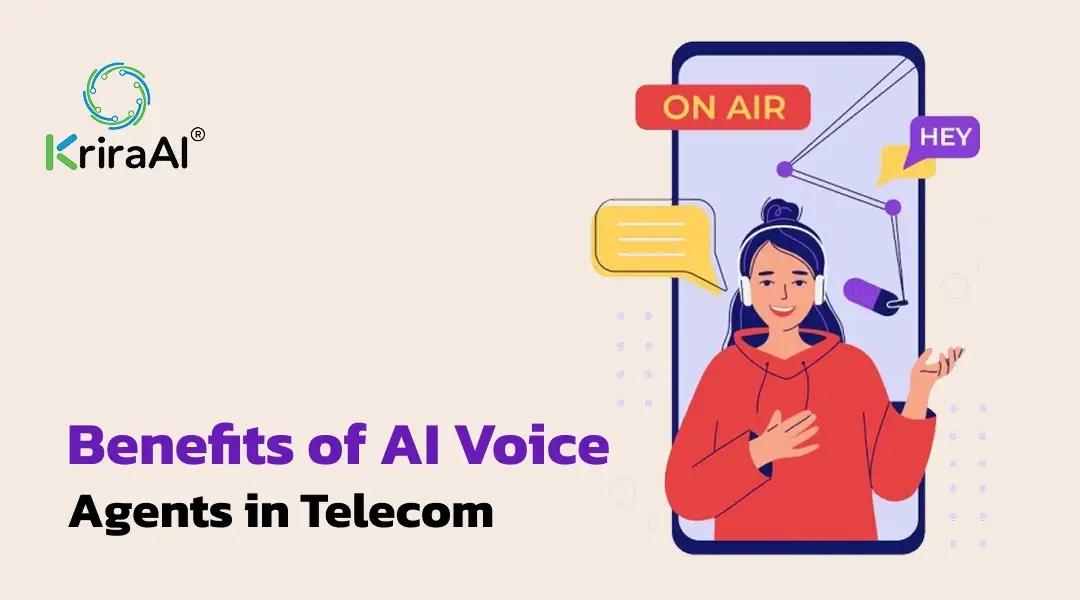From IVRs to AI Voice Agents: The Evolution of Telecommunication
Back in 2014, I sat in a strategy war-room with a telecom CTO who said, deadpan, “If I press 1 one more time, I’ll cancel my own service.”
That sentence stuck with me.
Because it perfectly summed up the collective fatigue with traditional IVR systems—those robotic “press 1 for support” trees that were supposed to make life easier. Instead, they became mazes. Frustrating. Cold. And wildly out of step with what modern users expect.
Fast-forward to today: we’re seeing the rise of something smarter—AI Voice Agents. Not just bots. Not just voice interfaces. These are intelligent, context-aware, conversational systems that are fundamentally reshaping the telecom customer experience.
And this isn’t hype. It’s already happening.
Let’s unpack how we got here—and where this all leads.
Why Telecom Is Undergoing a Radical Shift
The telecom industry used to set the pace for communication tech. Now? It’s playing catch-up.
Why?
Because customer expectations have evolved faster than the tools built to serve them. People expect conversations, not menus. They want empathy, not error codes.
Throw in surging call volumes, shrinking margins, and a rising need for contact center automation, and you’ve got a perfect storm begging for innovation.
From Pressing Buttons to Having Real Conversations
Let’s rewind.
The Era of Traditional IVRs
In the 1990s and early 2000s, traditional IVR systems were revolutionary. Suddenly, you didn’t need a human to answer every call. That meant cost savings, faster routing, and 24/7 coverage.
But it came at a price.
Limitations:
Rigid menus that didn’t understand context
User frustration (ever yelled “AGENT!” at your phone?)
High dropout rates and low problem resolution
They were mechanical, inflexible, and deeply impersonal.
And as customers got smarter, IVRs started to look dumb.
The Rise of Conversational Interfaces
Now we’re talking (literally).
With breakthroughs in natural language processing (NLP) and speech recognition, we began to see virtual voice assistants pop up—think Siri, Alexa, and Google Assistant.
But here’s the thing: those were built for consumer convenience, not enterprise call complexity.
Still, the stage was set.
Chatbots vs. Voice Bots – What Changed?
While chatbots handled text-based queries, AI-powered voice bots took the leap into real-time audio—adding layers of nuance, tone recognition, and emotional response.
The result?
Conversational AI finally became viable in live call environments.
Enter the AI Voice Agent
Let’s get specific.
What is an AI Voice Agent?
An AI Voice Agent is a system that uses voice AI technology, NLP, and decision intelligence to carry out full conversations with users over voice channels—handling queries, solving problems, and even escalating when needed.
This isn’t just a smarter IVR. It’s a paradigm shift.
How it differs from IVRs and simple voice bots:
Understands natural language, not just keypad inputs
Learns from context and conversation history
Can express emotion, tone, and nuance
Supports multi-intent detection (yes, you can ask two things at once)
Benefits of AI Voice Agents in Telecom

I’ve deployed these systems inside real telecoms. Here’s what they saw:
24/7 Intelligent Call Handling
Your AI doesn’t sleep, call in sick, or go off-script. It always answers.
Real-Time Language Understanding
Not just English. Not just keywords. Smart voice agents can handle multiple languages, dialects, and slang.
Personalization at Scale
Whether you're prepaid or postpaid, rural or urban, it adjusts tone and flow. Automatically.
Scalability for Large Telecom Networks
One new product? One update? The agent learns it once—then handles a million calls about it.
Real-World Telecom Use Cases
Let’s bring this down to the trenches.
SIM Activations & Porting: No forms. Just voice verification and done.
Voice-based KYC: AI guides users through the process and verifies identity.
Bill Reminders & Plan Upgrades: Outbound AI voice calls explain options and help users choose. Like a smart advisor.
Customer Support: Handles 70-80% of L1 queries without escalation.
I’ve personally overseen deployments where human-agent workloads dropped by 40%—without compromising experience.
Challenges & Considerations
Not all sunshine and rainbows.
Privacy and Data Compliance
Telecom = regulation. Your AI Voice Agent must play nice with GDPR, TRAI, HIPAA, whatever acronym is relevant.
Accent and Language Diversity
India alone has 22 official languages. Your model better understand Hinglish.
Integrating with Legacy Telecom Systems
This is the nightmare no one talks about. But with solid API strategies and some creative middleware, it can be done.
The Future: Autonomous, Emotionally Aware Voice Agents
Let’s peek over the edge.
The next frontier?
Emotional Intelligence in Voice
Detecting when a user is frustrated, confused, or angry—and adapting tone accordingly.
Predictive Call Routing
Knowing why someone is calling before they even speak. (Yes, really. Based on behavioral and usage data.)
Voice AI + GenAI Convergence
Imagine a voice agent that doesn’t just respond, but creates personalized responses on the fly using a knowledge graph + generative model.
We're not far off.
Conclusion
The journey from IVRs to AI Voice Agents isn’t just a tech upgrade—it’s a cultural reset for how telecom treats its customers.
And if you're asking yourself, “Is this really the right time to invest in this?”
Let me answer with what one of my clients said after deploying their AI voice agent:
“We didn’t just reduce costs. We finally stopped making our customers dread calling us.”
That’s the bar now.
If you’re ready to stop frustrating your users and start conversing with them—KriraAI knows how to get you there.
FAQs
IVRs follow static menus; AI voice agents understand natural language, adapt in real-time, and carry on full conversations.
Yes—for most Level 1 support and transactional use cases. But a hybrid approach may still be ideal for complex cases.
They reduce wait times, increase first-call resolution, and provide a personalized, frustration-free experience.
Cost varies, but ROI is often realized quickly through reduced manpower and improved customer retention.
Look for proven deployment history, strong NLP capabilities, multilingual support, and deep integration expertise—like we have at KriraAI.

CEO
